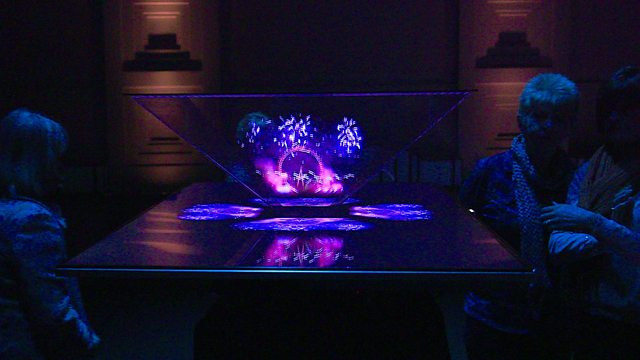BBC's holographic TV could bring you 3D EastEnders
The BBC is exploring how new technologies will change the way we consume media content.

The BBC has created an experimental holographic TV as it explores how emerging technologies will change the way consumers engage with media. Cyrus Saihan, BBC's head of digital partnerships, said recent innovations like augmented reality and mixed reality had the potential to revolutionise the way connect is consumed.
For the experiment, the BBC asked a local plastics cutter to make a simple acrylic pyramid shape based on sketches they had done then placed it upside-down on top of a 46in flat-screen television. In doing so, the team was able to create the illusion of floating images inside the pyramid, using what they called "a modern-day version of an old Victorian theatre technique".
Saihan said method was a scaled-up version of a technique they'd seen people use to create 'holographic' displays using mobile phones. "It occurred to us that making a super-sized version of these low-cost displays would give us a way to see how holograms might work on a larger scale, something comparable to the size of a living room TV," he said.
The footage, taken from the broadcaster's public service and BBC Worldwide archives, had to meet specific criteria for the illusion to work and was formatted by UK-based visual effects and company MDH Hologram in order to "bring it to life".

While the setup was rudimentary, the researchers said they observed some "striking results". These were were most effective when viewed at eye level and in low light, due to the narrow viewing angles
While the physics involved with light reflecting off a pyramid shape and the TV's screen size means there are practical limitations to such displays, Saiham said that the experiment succeeded in offering a basic idea of how audiences might view TV content in a few years' time.
"This wasn't an exercise to test how well this specific prototype performed, it was intended to give us a good approximation as to what BBC content would look like on a 'holographic' TV, get an insight into what audiences thought of it and give us a cheap way to explore floating images in the real world," he said.
"Our experiment was fairly simplistic, but the new technologies on the horizon have the potential to completely change the way that audiences experience media content in the future."
© Copyright IBTimes 2025. All rights reserved.






















